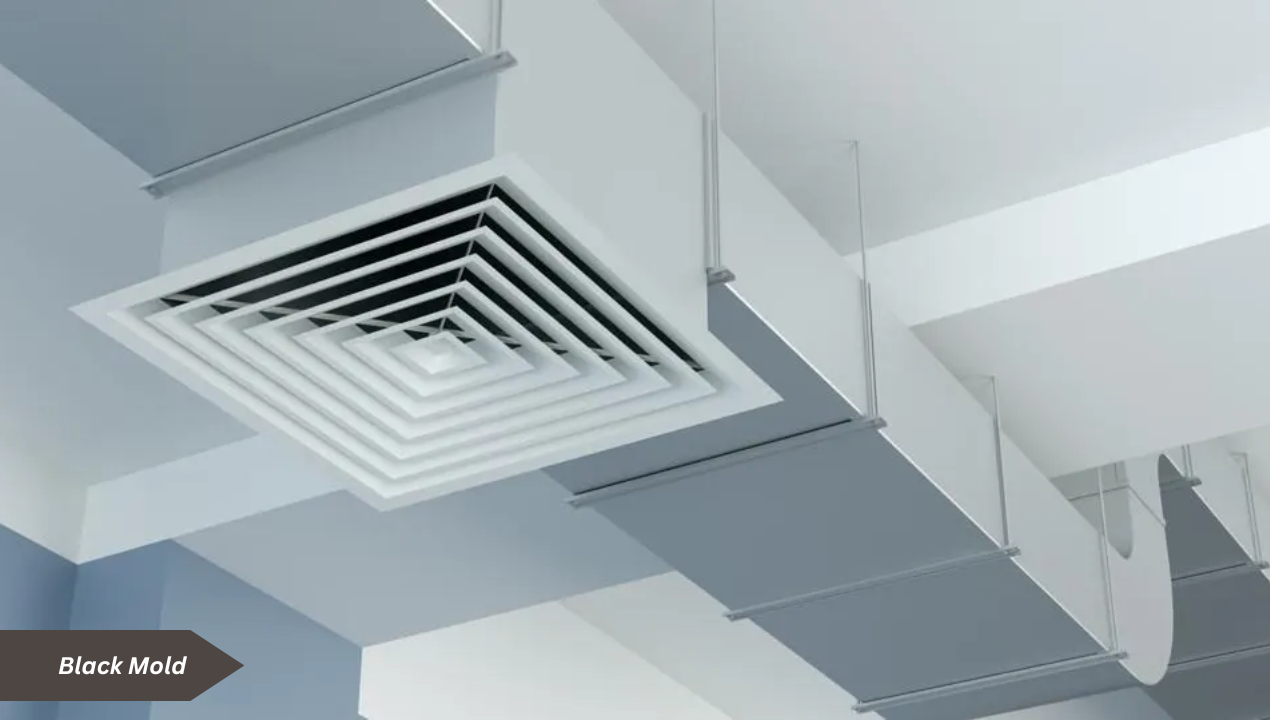Keeping your home’s ductwork clean is crucial not only for the efficiency of your HVAC system but also for the health of everyone living in your home.
Mold in ductwork is a common issue that can cause a range of health problems and reduce the quality of your indoor air. But don’t worry, tackling mold in your ducts is manageable with the right approach.
Causes
Mold in ductwork typically results from excess moisture. This can be due to high humidity, leaks in the duct system, or condensation within the ducts themselves. Poor ventilation and infrequent maintenance can exacerbate the issue.
Health Risks Associated with Mold
Exposure to mold can lead to respiratory issues, allergies, and other health problems. Symptoms include coughing, sneezing, eye irritation, and in severe cases, asthma attacks. It’s important to address mold quickly to protect your health.
Identifying Mold in Ductwork
Signs of Mold in Your HVAC System
Look out for musty odors when the HVAC system is running, visible mold growth around vents, or an increase in allergy symptoms among household members. These are strong indicators of mold presence.
Tools and Techniques for Mold Detection
A moisture meter can help detect damp areas in your ductwork. Additionally, a professional inspection might include using borescopes or other devices to visually inspect hard-to-reach areas inside the ducts.
Preparation Before Cleaning
- Safety Precautions
Wear protective gear including gloves, a mask, and safety goggles to prevent exposure to mold spores. Ensure proper ventilation in the area where you’ll be working.
- Gathering Necessary Supplies
You’ll need cleaning agents (like bleach or commercial mold removers), brushes or cloths, a wet/dry vacuum, and possibly a fogging machine if the infestation is severe.
- Shutting Down the HVAC System
Turn off your HVAC system to prevent the spread of mold spores during the cleaning process. This also ensures safety while you work inside the ducts.
Cleaning Methods for Mold Removal
- Using Household Cleaning Solutions
A mixture of one part bleach to ten parts water can be effective. However, bleach should be used with caution as it can be harsh on surfaces and produce fumes.
- Professional Mold Removal Products
There are several commercial products designed specifically for mold removal in HVAC systems. These often contain fungicides that are more effective and safer for use in ductwork.
- Natural Remedies for Mold Removal
Vinegar and baking soda can also be effective against mold. Vinegar is acidic and can kill most types of mold, while baking soda can absorb moisture and deodorize.
Step-by-Step Guide to Cleaning Mold from Ductwork
- Step 1: Inspect and Access Ductwork
Carefully remove vent covers and inspect the ducts for visible mold. Use a flashlight to see better into the ductwork.
- Step 2: Apply Cleaning Solution
Spray the chosen cleaning solution generously onto the affected areas. Ensure the solution reaches all corners and crevices where mold might be hiding.
- Step 3: Scrub and Remove Mold
Use a brush or cloth to scrub the mold off the duct surfaces. Be thorough to ensure all mold is removed.
- Step 4: Rinse and Dry the Area
Rinse the cleaned areas with water (if using a solution like bleach) and dry thoroughly to prevent future mold growth. A wet/dry vacuum can help with this step.
Preventing Mold Recurrence
- Maintaining Proper Humidity Levels
Use dehumidifiers to keep indoor humidity below 60%. This helps prevent the damp conditions that mold needs to grow.
- Regular HVAC Maintenance
Schedule regular maintenance for your HVAC system to ensure it operates efficiently and remains free of mold. Clean or replace filters regularly.
- Using UV Light for Mold Prevention
UV lights installed within the HVAC system can help kill mold spores and prevent them from colonizing the ductwork.
When to Call a Professional
- Assessing the Severity of Mold Infestation
If the mold infestation is extensive or you experience persistent health issues, it’s best to call a professional. They have the tools and expertise to handle severe cases safely and effectively.
- Benefits of Professional Mold Remediation
Professionals can provide a thorough cleaning and offer solutions to prevent future mold growth. They also ensure compliance with safety standards and regulations.
Conclusion
Maintaining clean ductwork is essential for a healthy living environment. Regular inspections and prompt mold removal can save you from health issues and costly repairs down the line. By following these steps, you can effectively remove mold from your ductwork and keep your home’s air quality in check.
FAQs
How often should ductwork be inspected for mold?
Ductwork should be inspected at least once a year, especially in humid climates, to ensure there is no mold growth.
Can mold in ductwork affect the efficiency of my HVAC system?
Yes, mold can clog filters and ducts, reducing airflow and making your HVAC system work harder, thus reducing its efficiency.
Is it safe to clean mold from ductwork myself?
For minor infestations, it is generally safe if proper precautions are taken. However, for severe mold growth, it’s advisable to seek professional help.
What are the signs that mold has spread beyond the ductwork?
Persistent musty odors, widespread mold in various parts of the home, and ongoing health issues could indicate that mold has spread beyond the ductwork.
How can I improve the air quality in my home after removing mold?
Use air purifiers, ensure proper ventilation, regularly replace HVAC filters, and maintain humidity levels to improve air quality after mold removal.
